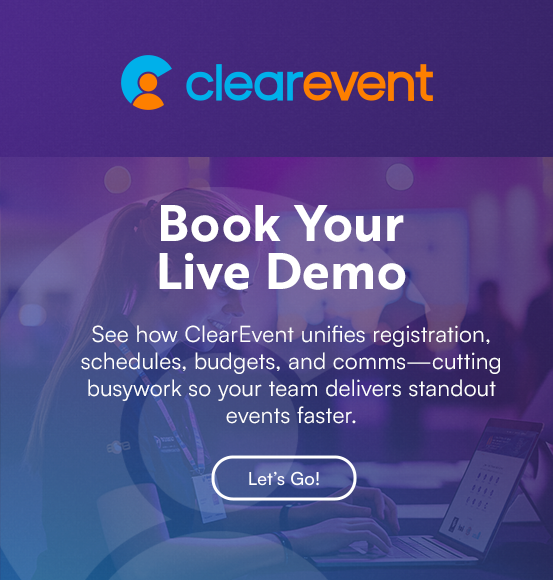Tickets vs. Registration (Part 2): When to Use Each?

Series: Part 2 of 3 — Part 1 → • Part 3 →
In Part 1, we used personalization to decide between tickets and registration. Now let’s apply it to real-world scenarios.
Rule of thumb
Low personalization → use tickets. Higher personalization → use registration.
Example 1: Festival entry (Tickets)
Goal: collect entry payments and issue proof-of-entry. Pattern: Adult/Child/Senior, single or multi-day passes, with group purchases common. Inside the gates: no additional tailored experience.
Why tickets? Minimal data, fast checkout, and group-friendly. Limited personalization is handled by offering different ticket types (e.g., multi-day pass).
Example 2: Vendors, entertainment, volunteers (Registration)
These roles need individual sign-ups, role-specific fields, approvals, and access rules.
- Vendors: booth options, add-ons, manual approval, payment on approval
- Entertainers: act details, tech needs, schedule coordination, manual approval
- Volunteers: profile, skills, shift preferences, availability; often auto-approved then assigned jobs
Why registration? High personalization, detailed information exchange, and role-based access and communications. Each type of participant experiences the event differently, and registration supports this flexibility.
Example 3: Conference using both
Delegates: register for a personalized experience with session choices, itineraries, badges, receipts. Special Dinner (side event): separate tickets which are open to delegates and guests.
Why split?
- Delegates may decide on the dinner later; a separate ticket flow is faster and shareable
- Keeps the main registration form lean
- Supports group dinner purchases
Having both tickets and registration options gives planners the best experience every time.
Why not just add the dinner to the registration form?
You can but it creates friction. It forces early decisions, bloats the form, and complicates later add-ons. Standalone tickets keep the experience flexible and friction-free.
Most events need both
As events evolve, you’ll mix registrations (for personalized roles) and tickets (for entry and side events). Use the 4-question framework from Part 1 for each participant type or activity.
Next: In Part 3, we’ll explore how to choose the right system and what to watch for when a platform claims to “do both.”
Want a 10-minute audit of your flows? Talk to us. We’ll map roles, side events, and the fastest, cleanest path for each persona.
Frequently Asked Questions (FAQ)
When should I use tickets for my event? Tickets are ideal when personalization is low, such as general admission for a concert, festival, or gala dinner. They provide a quick checkout process and work well for both individuals and groups.
Why is registration better for vendors or volunteers? Vendors, entertainers, and volunteers each need personalized experiences, approvals, and role-specific details. Registration forms allow organizers to collect this information and manage participants effectively.
Can I combine tickets and registration in the same event? Yes, many events benefit from using both. For example, conferences often use registration for delegates and tickets for add-on experiences like gala dinners or networking receptions.
What happens if I use tickets when registration is needed? If you rely only on tickets when high personalization is required, you may miss important participant details. This can make it harder to manage roles, approvals, or tailored experiences.
How do I decide quickly between tickets and registration? Ask yourself four questions: Is it individual or group sign-up? Are approvals needed? How much data do I need to collect? Is participation personalized? Your answers will guide the right choice.
